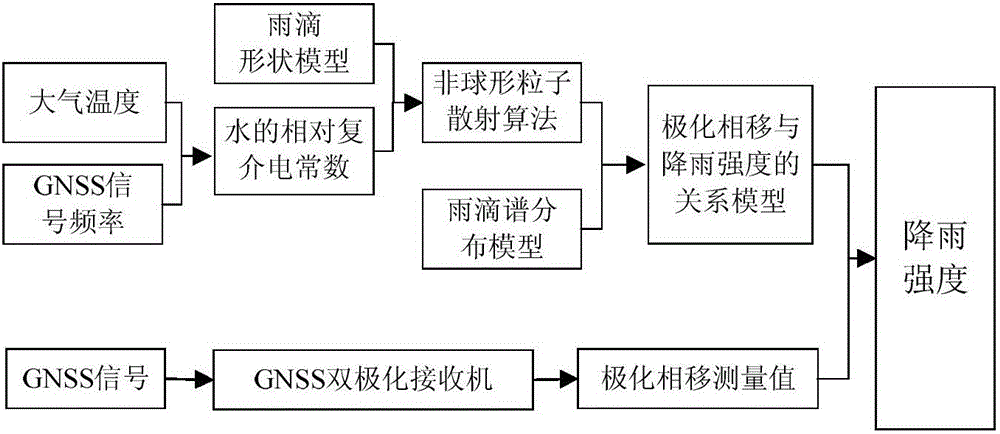Rainfall intensity mountain-based measurement method employing GNSS signal polarization phase shift
A technology of rainfall intensity and measurement method, applied in rainfall/precipitation meter, measurement device, meteorology, etc., can solve the problem of limited spatial resolution and temporal resolution, less research on the application of GNSS polarized signals, and unpublished research results and other problems, to achieve the effect of strong continuity, rich GNSS signal resources, equipment complexity and low cost
- Summary
- Abstract
- Description
- Claims
- Application Information
AI Technical Summary
Problems solved by technology
Method used
Image
Examples
Embodiment Construction
[0020] The present invention will be described in further detail below in conjunction with the accompanying drawings.
[0021] 1. Calculate the relative complex permittivity of water
[0022] Set up a GNSS dual-polarization receiver on the top of a mountain with a wide view, and there is no shelter in the antenna pointing direction, and can normally receive GNSS satellite signals within the range of 0-30° elevation angle and 80° viewing angle; then, use the receiver to collect through The forward scattering signal of the GNSS satellite behind the rainfall area, and use the frequency of the signal, combined with the atmospheric temperature at this time, and use the Ray formula to calculate the relative complex permittivity of water.
[0023] The Ray formula used is
[0024] ϵ ′ = ϵ ∞ + ( ϵ s - ...
PUM
 Login to View More
Login to View More Abstract
Description
Claims
Application Information
 Login to View More
Login to View More - R&D
- Intellectual Property
- Life Sciences
- Materials
- Tech Scout
- Unparalleled Data Quality
- Higher Quality Content
- 60% Fewer Hallucinations
Browse by: Latest US Patents, China's latest patents, Technical Efficacy Thesaurus, Application Domain, Technology Topic, Popular Technical Reports.
© 2025 PatSnap. All rights reserved.Legal|Privacy policy|Modern Slavery Act Transparency Statement|Sitemap|About US| Contact US: help@patsnap.com



